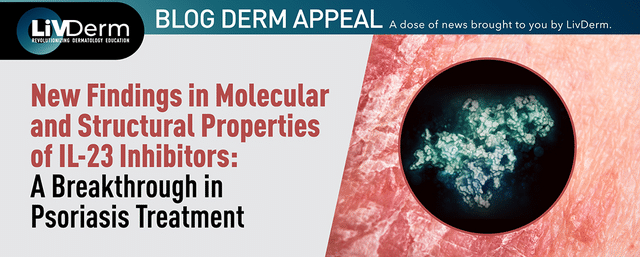LiVDerm is exploring topics that specifically impact darker skin tones – referred to in the industry as Skin of Color (SOC) – to shine awareness on racial disparities that exist in the dermatologic community. This week we explore the unique challenges of diagnosing and treating melanoma in patients with SOC, and the disproportionate disease burden melanoma has in this community.
Melanoma in Caucasian vs. SOC patients
Despite the fact that the incidence of melanoma in SOC patients is much lower than in Caucasians (1/100,000 and 27/100, 000, respectively) the five-year survival rate is 20% lower for patients with SOC. The reasons for this disparity are being investigated, but hypotheses include that delay of diagnosis in SOC communities is a result of more barriers to medical care, a flawed notion that darker pigmented skin isn’t at risk of developing skin cancer, or the fact that cancerous lesions is SOC patients tend to develop in less visible areas of the body.
Hidden melanomas
Melanoma in SOC occurs most often on areas that get little sun exposure. Up to 75% of cancerous lesions appear on palms of the hands, soles of the feet, toes, fingers, or nail beds. Because of this, melanoma is SOC is attributed more to genetic factors or DNA abnormalities than UV exposure. These are called hidden melanomas because they are less visible areas of the body, a factor that increases the likelihood they will be overlooked.
The alphabet of melanoma
A helpful guide to assist self-examinations for patients with SOC is to follow the alphabet of melanoma:
A = Asymmetry. Pigmented lesions should look the same on both sides when folded in half
B = Border irregularity. The borders should be smooth and regular, usually round or oval in shape
C = Color variation. The lack of uniform and even color
D = Diameter. Size of greater than 6mm or about the size of a pencil eraser
E = Evolving. Any change (including size, shape, color) in an existing mole or skin lesion
Because of the higher incidence of nail melanoma in SOC, the alphabet of nail melanoma is also useful:
A = Age range 20-90 years, African-American, Native American, or Asian
B = Band of Brown or Black pigment in nail OR Breadth over 3mm OR Border that is irregular
C = Change in size or growth rate of nail band OR lack of Change in irregular nail despite treatment
D = Digit involved (nail melanoma is most common in the thumb, big toe, and index finger) Pigmented band on a single Digit is more suspicious and Dominant hand involvement is more common
E = Extension of brown or black pigment to the side or base of the nail
F = Family or personal history of melanoma or irregular moles
Although following this guide can help patients identify problematic lesions on the scalp, skin or nail beds, it is only useful if the suspected growth is in a an area visible to the patients themselves. It is not a substitute for regular examinations performed by a licensed dermatology provider.
Bob Marley
A recent article published by the Skin Cancer Foundation boldly declares “Bob Marley Should Not Have Died from Melanoma.” A celebrated Jamaican songwriter and musician, when Bob Marley noticed a dark spot under his toenail he attributed it to a soccer injury and had no idea it was acral lentiginous melanoma (ALM), an aggressive form of melanoma common in people with SOC, especially those of African descent. By the time Marley’s ALM was diagnosed it had metastasized to his brain, liver and lungs. Less than eight months after he was diagnosed, Marley died at the young age of 36 years old. Unfortunately, there hasn’t been enough progress in improving survival rates in SOC patients with melanoma since Marley’s death in 1981.
Health care equity
Health care equity does not mean providing the same care to all patients; it means providing the best, most personalized care to individuals. Providers that strive to understand inequities first will be better poised to overcome them. One significant barrier to reducing racial disparities in dermatology is getting more people with SOC to become either providers themselves, or other fixtures in the community so they can advocate from within. Special considerations for diagnosing and treating conditions in SOC also need taught in all stages of dermatologic training. More images of SOC in dermatology textbooks will allow for better visual identification, a key component of effective dermatologic care. Skin cancer – along with almost every other skin condition – looks different in SOC than it does on Caucasian skin.
Key takeaway
Melanoma is less common in people with SOC but has dramatically worse outcomes in this population. This disparity is attributed to less public awareness of skin cancer risk in SOC patients, infrequent use of sunscreen in Black and SOC patients, less access to health insurance and medical care, and the fact that skin cancer lesions in SOC patients may appear in hidden areas that are less commonly examined, such as the soles of the feet and nail beds.
Sources
- https://www.skincancer.org/skin-cancer-information/skin-cancer-skin-of-color/
- https://www.dermatologytimes.com/view/challenges-in-diagnosing-melanoma-in-soc
- https://skinofcolorsociety.org/patient-dermatology-education/melanoma/
- https://www.mayoclinic.org/diseases-conditions/melanoma/symptoms-causes/syc-20374884
- https://www.skincancer.org/blog/bob-marley-should-not-have-died-from-melanoma/
















